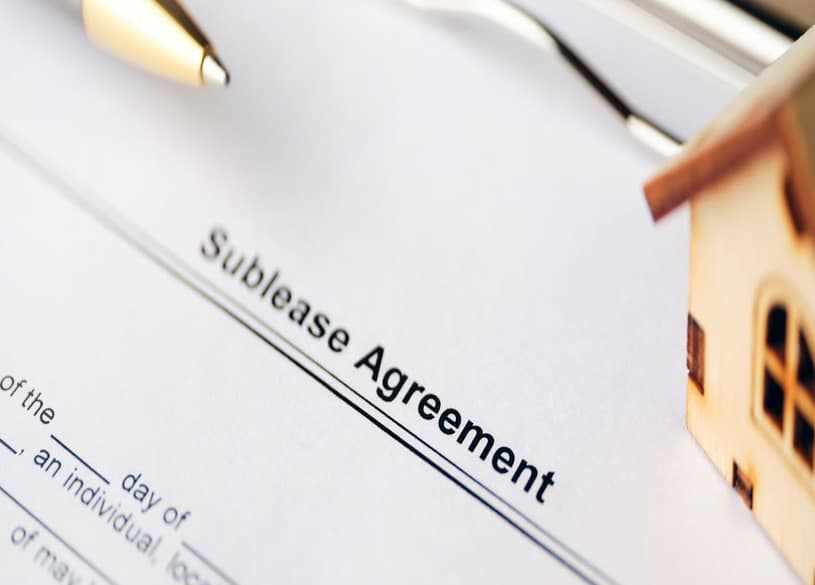Dubai’s rental market offers a vibrant landscape for tenants and investors alike. Subleasing, a common practice in many rental markets, allows tenants to lease out their rented property to another party. However, in Dubai, this practice comes with its own set of rules, regulations, and risks. This guide will walk you through the essentials of subleasing in Dubai, ensuring you have all the information you need to navigate this complex area of property management legally and efficiently.
Understanding Subleasing in Dubai
What is Subleasing?
Subleasing occurs when a tenant leases out their rented property to another person, known as a subtenant, for a specific period. The original tenant, also known as the sublessor, retains the legal responsibilities and obligations under the original lease agreement with the landlord. Subleasing can be a viable option for tenants who wish to share rental costs or temporarily vacate their leased property without terminating their lease agreement.
Is Subleasing Legal in Dubai?
Subleasing is permitted in Dubai, but it is subject to strict regulations set by the Dubai Land Department (DLD) and the Real Estate Regulatory Agency (RERA). According to RERA, subleasing is only legal if explicitly allowed in the original tenancy contract and approved by the landlord. Tenants must also register the sublease with Ejari, the system that regulates rental contracts in Dubai, to ensure compliance with legal requirements.
Legal Requirements for Subleasing in Dubai
Tenant and Landlord Agreements
- Explicit Permission: The most critical factor in legal subleasing is obtaining explicit permission from the landlord. This permission should be in writing and ideally included in the tenancy contract. Without the landlord’s consent, subleasing is considered illegal and could result in fines or eviction.
- Contract Clauses: Review the tenancy agreement carefully to identify any clauses related to subleasing. If the contract prohibits subleasing, tenants must negotiate terms with the landlord before proceeding.
- Registration with Ejari: Once the landlord’s approval is obtained, the sublease must be registered with Ejari. This registration ensures that the sublease is recognized by the DLD and that all parties are protected under the law.
Key Documents Required
- Original Tenancy Contract: A copy of the existing tenancy agreement between the landlord and the original tenant.
- Sublease Agreement: A new contract between the original tenant and the subtenant outlining the terms of the sublease, including rent, duration, and obligations.
- Landlord’s Consent: Written permission from the landlord approving the sublease arrangement.
- Ejari Registration: A copy of the Ejari registration certificate for the sublease agreement.
Risks and Challenges of Subleasing
Potential Legal Consequences
- Fines and Penalties: Subleasing without the landlord’s consent or Ejari registration can result in significant fines and penalties. The DLD has the authority to impose fines on tenants who violate subleasing regulations, and in severe cases, this could lead to eviction.
- Eviction Risks: Unauthorized subleasing can be grounds for eviction. Landlords have the right to terminate the tenancy if the tenant subleases the property without permission.
- Liability Issues: The original tenant remains liable for any damage, rent arrears, or violations committed by the subtenant. This liability persists even if the subtenant fails to meet their obligations, making it crucial for the original tenant to carefully select and manage subtenants.
Financial Risks
- Unreliable Subtenants: Choosing a subtenant without proper screening can lead to financial losses. Issues such as missed payments, property damage, or legal disputes can arise if the subtenant does not fulfill their obligations.
- Market Fluctuations: Changes in the rental market can affect the viability of subleasing. For instance, if rental prices drop, subleasing may no longer cover the tenant’s original rent obligations, leading to potential losses.
Best Practices for Subleasing in Dubai
Steps to a Successful Sublease
- Secure Written Permission: Always obtain written permission from the landlord and ensure it is reflected in the tenancy agreement.
- Draft a Clear Sublease Agreement: The sublease agreement should detail all terms, including rent, security deposits, duration, and subtenant responsibilities. Consider consulting a legal professional to draft or review the agreement.
- Screen Subtenants Carefully: Conduct thorough background checks on potential subtenants, including credit checks, references, and employment verification, to minimize the risk of future disputes or payment issues.
- Register with Ejari: Complete the registration of the sublease with Ejari promptly to ensure the arrangement is legally recognized.
Managing the Sublease
- Regular Communication: Maintain open communication with both the landlord and the subtenant to address any issues promptly.
- Monitor Compliance: Ensure that the subtenant complies with all building regulations, community rules, and lease terms to avoid conflicts.
Conclusion
Subleasing in Dubai can be a practical solution for tenants looking to share rental costs or manage temporary relocations, but it must be approached with a full understanding of the legal and practical implications. By securing landlord permission, registering with Ejari, and adhering to the guidelines set by RERA, tenants can legally and successfully navigate the subleasing process. Always consider professional legal advice to ensure compliance and protect your interests in any subleasing arrangement.Contact us









